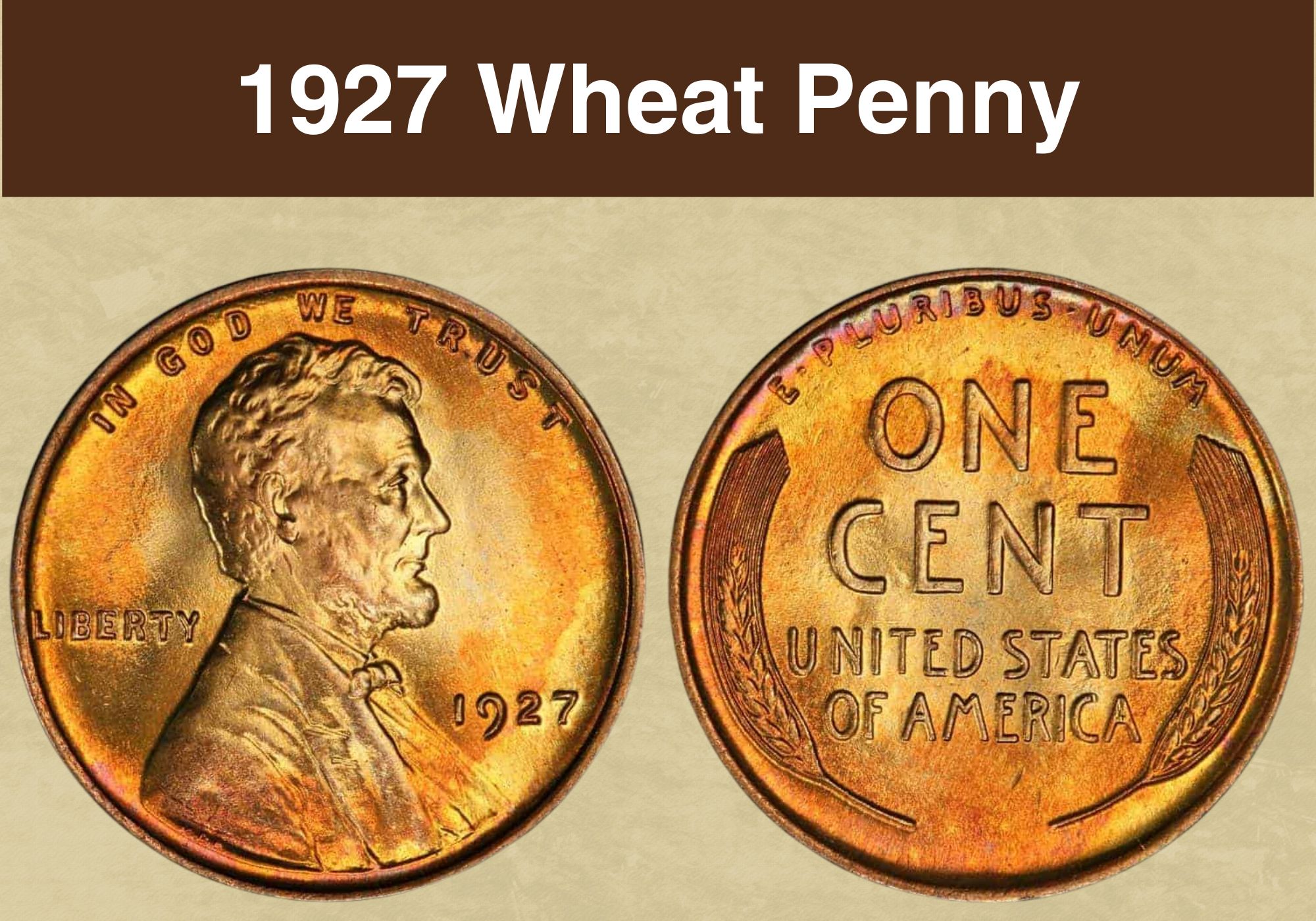
Coin Value Contents Table
Have you found a wheat penny from 1927 among your old pennies? Since it is nearly a hundred years old, you might be wondering about the value of the 1927 wheat penny. Could it be a rare and valuable specimen?
In this article, you will find information about the 1927 wheat penny value for all three mint varieties produced that year. You can also read about its history, the coin grading system, and errors to look out for to get you started with determining your coin’s value.
1927 Wheat Penny Value Chart |
|||||
| Mint Mark | Very Good VG8 | Extremely Fine EF40 | About Uncirculated MS50 | Uncirculated MS60 | Uncirculated MS63 |
| 1927 No Mint Mark Wheat Penny Value | $0.34 | $2.33 | $5.84 | $11 | $17 |
| 1927 D Wheat Penny Value | $2.05 | $8.75 | $35 | $75 | $115 |
| 1927 S Wheat Penny Value | $2.33 | $23 | $57 | $134 | $203 |
The history of the wheat penny goes back over one hundred years. The wheat pennies were the original penny series featuring the portrait of former President Abraham Lincoln on the obverse side of the coin.
The wheat pennies, so called because of the two stalks of wheat on the reverse, were first minted in 1909 to celebrate one hundred years since the birth of Lincoln. They were minted until 1959 when the reverse design was changed for the Lincoln Memorial design to celebrate 150 years since the president’s birthday.
The wheat penny was a historical coin in American coin history because it was the first time a real person’s image was used on a coin in America. Before this coin, only symbolic figures had been featured on American coins of any denomination.
The idea for using Lincoln’s image on the penny came from the president at the time Theodore Roosevelt. He was a great admirer of Lincoln and suggested marking his predecessor’s birthday with a commemorative coin. The design chosen for the coin was by sculptor Victor David Brenner. However, not everyone was happy with this choice.
Discord at the US Mint
When the US Mint proceeded to redesign the old Indian Head design, they rejected the ideas of the Chief Engraver for the Mint, Charles Barber in favor of Brenner as suggested by the president. Barber showed his unhappiness by trying to interfere with Brenner’s design, some of which, such as the lowering of the portrait on the obverse, was accepted.
There were further issues regarding the design when Mint officials told Brenner that including his full last name on the coin was not an option. Instead, he had to use his initials VDB. Brenner made the required change but only 484,000 pennies had been minted before production was halted and the initials removed from the coin.
While some have suggested it was because the public found the initials too obtrusive and advertorials, others say it was because of Barber’s objections. Whatever the real reason was, Brenner’s initials did not find their way back onto the coin until 1918 after Barber had passed away in 1917.
1927 Wheat Penny Grading
The 1927 wheat pennies are graded using the same methods as any other coins, with a Sheldon Scale. The scale starts with PO1 and PO2, which are the grades given to the poorest examples of a coin. It then moves through good and fine grades to about uncirculated. These grades are numbered from 3 to 59 and are all coins that have been in circulation.
Grades from 60 to 70 are used to describe uncirculated coins. These are coins that retain much more of the original qualities and show minimal or no wear and tear. The letters MS are used with the numeric scale and stand for the mint state. The grading MS70 is very rare since it is only used for coins in perfect condition.
| # | Grade |
|---|---|
| 1 | Basal State-1 |
| 2 | Fair |
| 3 | Very Fair |
| 4, 5, 6 | Good |
| 7, 8, 10 | Very Good |
| 12, 15 | Fine |
| 20, 30 | Very Fine |
| 40 | Extremely Fine |
| 50 | About Uncirculated |
| 60 | Mint State |
| 65 | Mint State |
| 70 | Mint State |
Please check our grading guides to know your coin scale, It’s the necessary step to know the exact value of your coin.
Check out now: How to Grade Lincoln Wheat Penny?
Wheat Penny Color Grading
You probably noticed the letter combinations BN, RB, and RD in grades given for the coins that were sold at auctions. These letters refer to the color of the coins and are a key feature when determining the value of copper coins such as the penny.
The letters BN stand for brown, RB for red-brown, and RD for red. Coins that have 95% of red surface can be given the designation RD, while 95% brown means BN designation. Anything between the two is designated as RB.
Because the copper is red when the coins are new and turns brown as it gets exposed to air and other elements, the color is a key indicator of the coin’s condition. Coins that still keep their red color are generally more desirable and therefore command higher values.
If you would like to know more about the color grading of copper coins, you can watch this video from PGCS Coin.
1927 No Mint Mark Wheat Penny Value
In 1927, the Philadelphia Mint produced by far the largest number of pennies. The facility released 144,440,000 pennies into circulation and it is for this reason, they are still reasonably easy to find especially at lower grades. It is for the same reason they are the cheapest mint variety among the 1927 wheat pennies.
A 1927 no mint mark wheat penny graded as VG8 is only worth $0.34 and even at EF40, the price is only $2.33. For uncirculated coins, you can expect to pay upwards of $11 at MS60. This is a significantly lower amount than for the Denver penny or San Francisco penny, which are valued at $75 and $134, respectively.
While the valuations are nothing to get excited about, 1927 no mint mark pennies can attract higher prices at auctions. The auction record for an MS66BN penny from Philadelphia is $350 and for an MS64RB it is $175. The most valuable 1927 no mint mark wheat penny sold for a record $8,638. It was graded as MS67+RD.
The Obverse of the 1927 Wheat Penny
On the obverse of the 1927 wheat penny, is the portrait of Abraham Lincoln designed by Victor Brenner. The former president is depicted facing right. To the right of the portrait, in the lower half of the coin, is the minting date of 1927.
The mint mark on the Denver and San Francisco minted coins is below the minting date. On the Philadelphia pennies, this space is empty. Behind the portrait is the word LIBERTY and above it, the phrase IN GOD WE TRUST. The designer’s initials, after they were included again, can be seen on the cutoff of the president’s shoulder.
The Reverse of the 1927 Wheat Penny
The reverse side of the wheat penny features two durum wheat ears, which give the coin its nickname. The wheat ears curve along both of the coin’s edges. In the center, is the denomination ONE CENT, and the words UNITED STATES OF AMERICA are below the denomination. The phrase E PLURIBUS UNUM is inscribed on the top.
Other Design Details of the 1927 Wheat Penny
The three mint facilities produced a total of 185,886,000 wheat pennies in 1927. These coins have a diameter of 19.05 millimeters and weigh 3.11 grams. They are just 1 millimeter thick. The coins are round and have smooth edges. They were made with 95% of copper and 5% of tin and zinc.
1927 D Wheat Penny Value
The Denver Mint produced 27,170,000 wheat pennies in 1927 and they are considered rarer than the Philadelphia variety, especially at higher grades, but less valuable than San Francisco pennies.
If you have a 1927 D wheat penny in very good circulated condition, you can expect to sell it for just over $2, while an extremely fine circulated penny is worth $8.75. An about circulated D penny is worth $35. An about circulated grade means the coin is almost as good as an uncirculated coin.
Uncirculated 1927 D wheat pennies start from $75 for an MS60-graded penny and $115 for an MS63-graded coin. The auction record for an MS66BN graded Denver penny is $1,045, $6,300 for an MS66+RB coin, and $4,680 for an MS65RD specimen.
Also read: 13 Most Valuable Wheat Penny Worth Money
1927 S Wheat Penny Value
The San Francisco Mint coined the lowest number of pennies in 1927, releasing just 14,276,000 pennies into circulation. This is reflected both in their valuations and their auction records.
While a VG8 graded 1927 S wheat penny is worth a very modest $2.33, the valuations jump to $23 for EF49 grades. For an AU50 San Francisco penny, you can expect to pay $57 and for uncirculated pennies, the prices start from $134.
When it comes to auction records, it is clear that the San Francisco-minted 1927 wheat pennies are considered much harder to find than the other two mint varieties with an MS65BN S wheat penny selling for $3,120.
The record for an MS65RB wheat penny is more than double that, having sold for $6,463 at an auction. However, the real prize winner is a 1927 S wheat penny graded as MS65+RD, which sold for $36,000 at an auction in 2022.
Also read: 12 Most Valuable Lincoln Penny Worth Money
Rare 1927 Wheat Penny Error Lists
1927 Wheat Penny Repunched Mint Mark Error
The repunched mint mark errors are a result of the mint mark being struck twice onto the coin. This would happen if the first mint mark wasn’t clear enough or it was punched in the wrong position.
An example of a repunched mint mark error among the 1927 wheat pennies is an error known as the D/D North error variety. On these coins, the original mint mark D was weak so it was struck again and the repunched, stronger mint mark can be seen slightly north of the original mint mark. The auction record is $1,175 for a penny graded as MS64RB.
1927 Wheat Penny Doubled Die Obverse Error
Doubled die errors are caused by an error during the process of making the coin die when some elements of the design are duplicated on the die. Often, the duplicated elements are slightly offset, which results in a doubled image on the coin.
These errors are sometimes confused with double-strike errors because they can both result in a duplicated image. However, a doubled die error is caused by an error on the die, not by the planchet being struck more than once with the same die.
The doubled die error can be found on 1927 pennies minted in Philadelphia. Look for doubling on the letters LIB on the word LIBERTY. The doubling is often also noticeable in some of the letters on IN GOD WE TRUST as well as the numbers two and seven on the mint date. The auction record was achieved with an MS64RD coin and is $2,613.
Also read: 17 Most Valuable Indian Head Penny Worth Money
Where to Sell Your 1927 Wheat Penny ?
Now that you know the value of your coins, do you know where to sell those coins online easily? Don’t worry, I’ve compiled a list of these sites, including their introduction, pros, and cons.
Check out now: Best Places To Sell Coins Online (Pros & Cons)
1927 Wheat Penny Frequently Asked Questions
How much is a 1927 penny worth now?
How much a 1927 penny is worth now depends on many factors such as its mint variety, rarity, color, and overall condition. While coins that are in good condition are only worth a little over their face value up to a few dollars, depending on their mint mark, values can rise to hundreds and thousands of dollars.
Because there were a large number of pennies minted in 1927, over 185 million in total, most pennies in circulated condition are not considered rare, especially in the Philadelphia variety. Philadelphia produced the largest number of pennies in 1927 and they are easier to find than the other two.
However, wheat pennies that are in excellent uncirculated condition are not as easy to find across all mint varieties. These are the coins that coin collectors want the most. Especially wheat pennies that still keep the original red color are sought after by collectors.
Is a 1927 penny rare?
There were over 185 million wheat pennies minted in 1927 and they are not considered particularly rare in an uncirculated state. However, they are far less common in mint state, and the higher the grade, the rarer the coin.
Also read: 11 Most Valuable Wheat Penny Errors

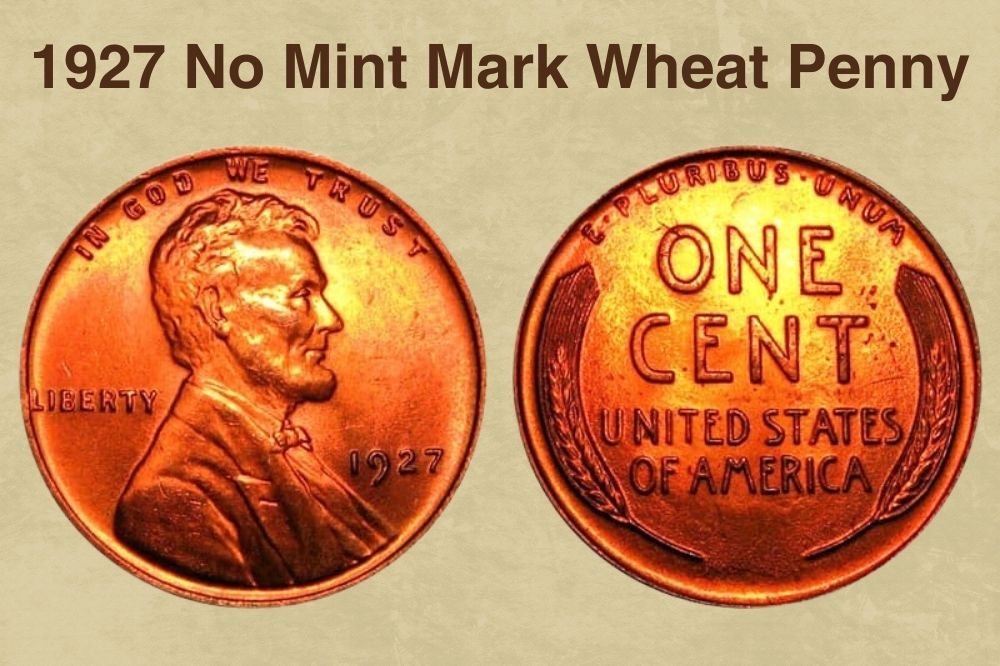
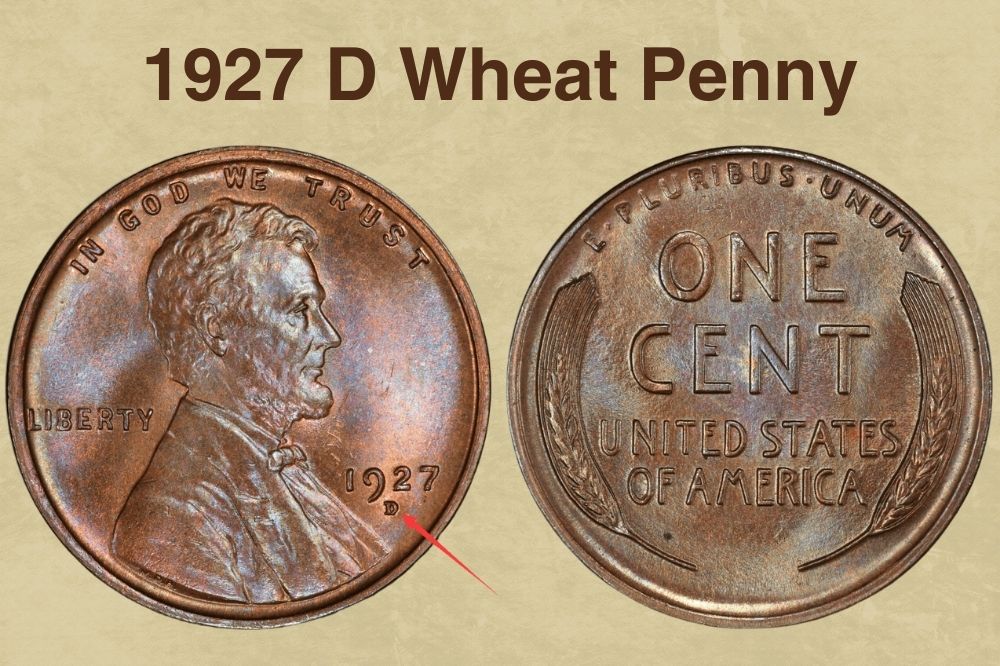
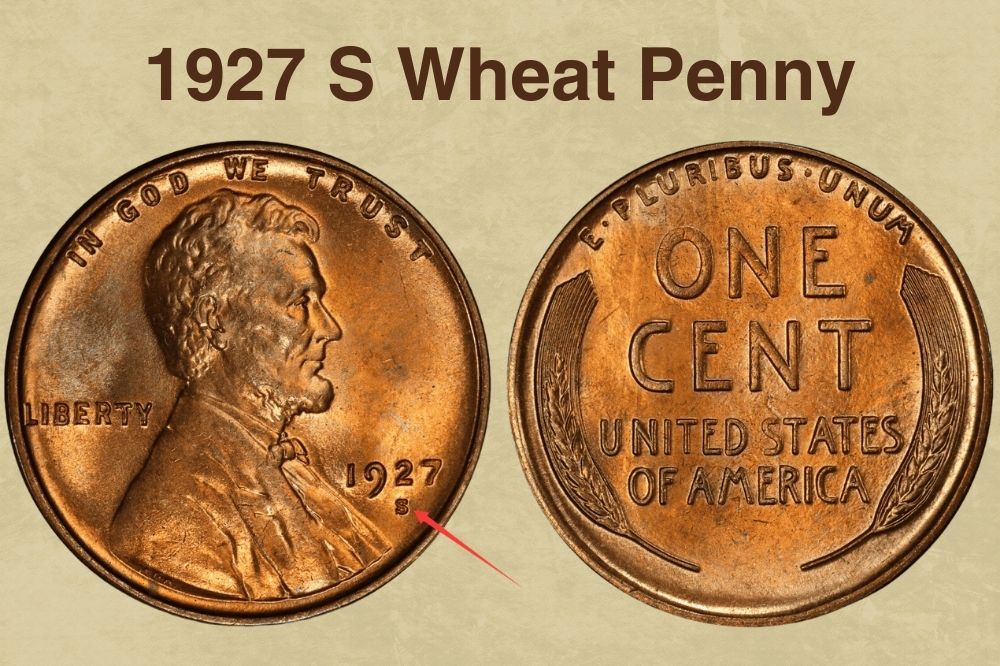
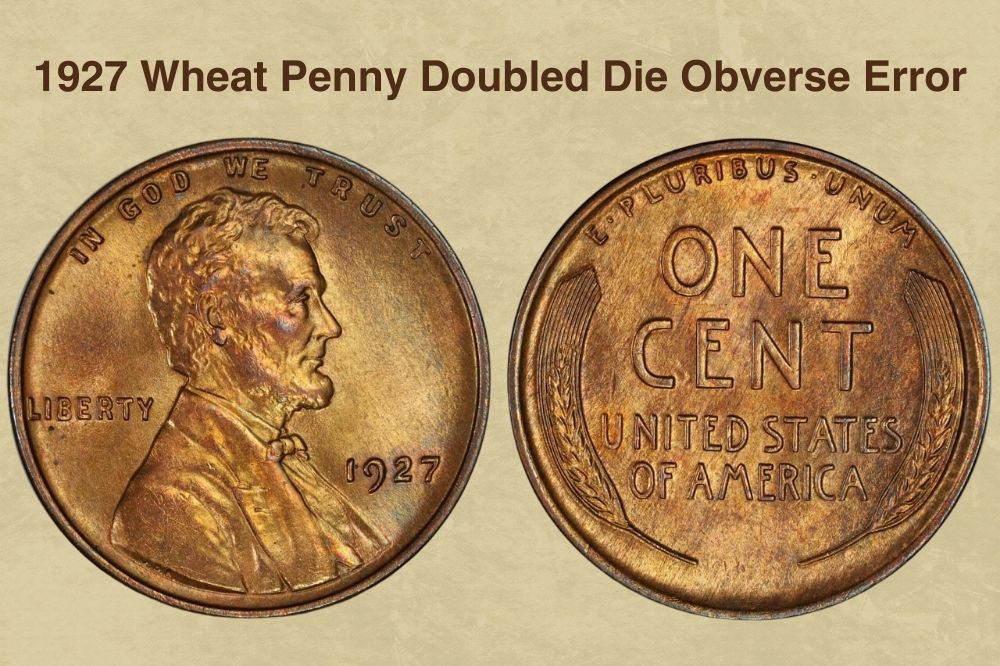
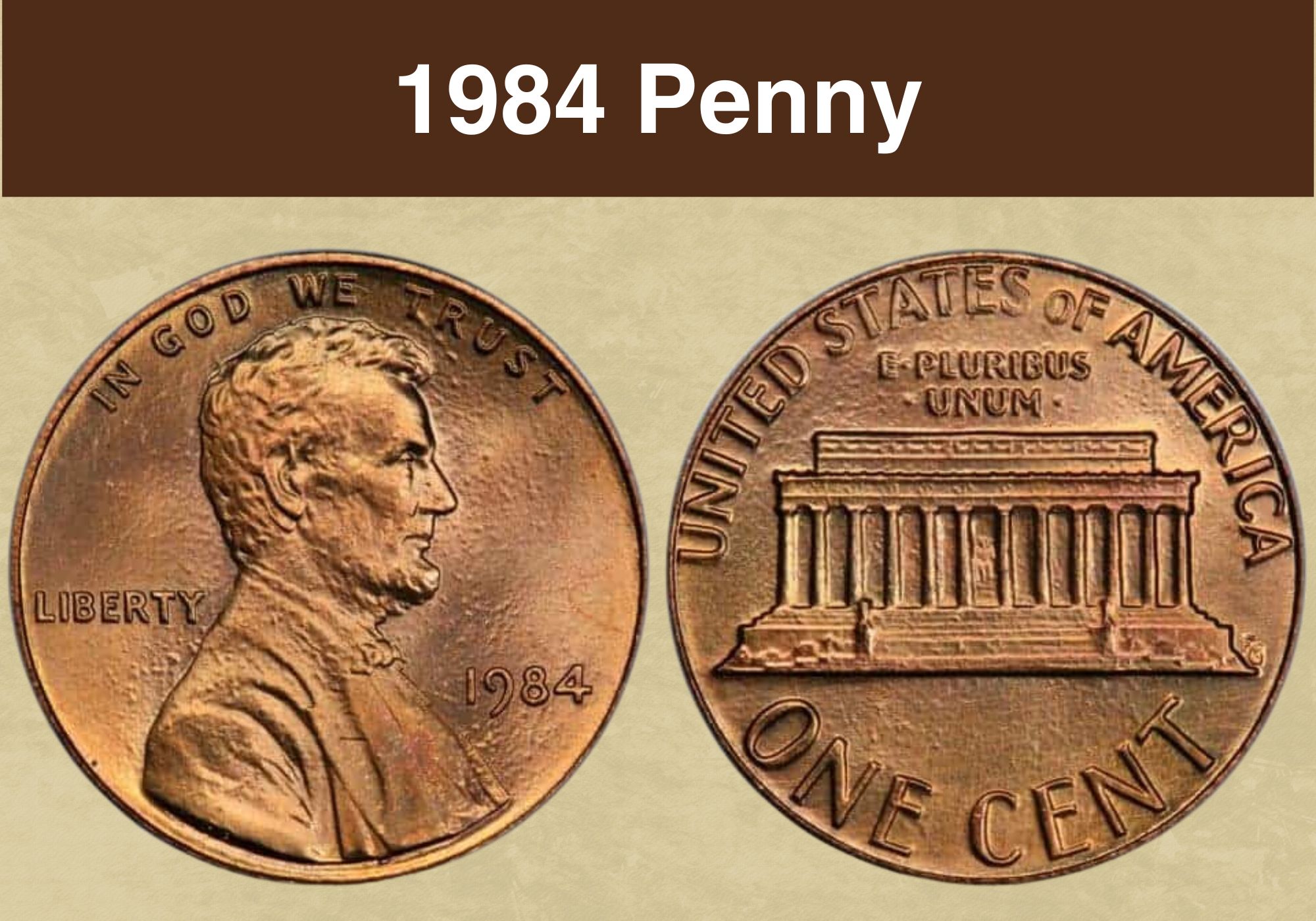
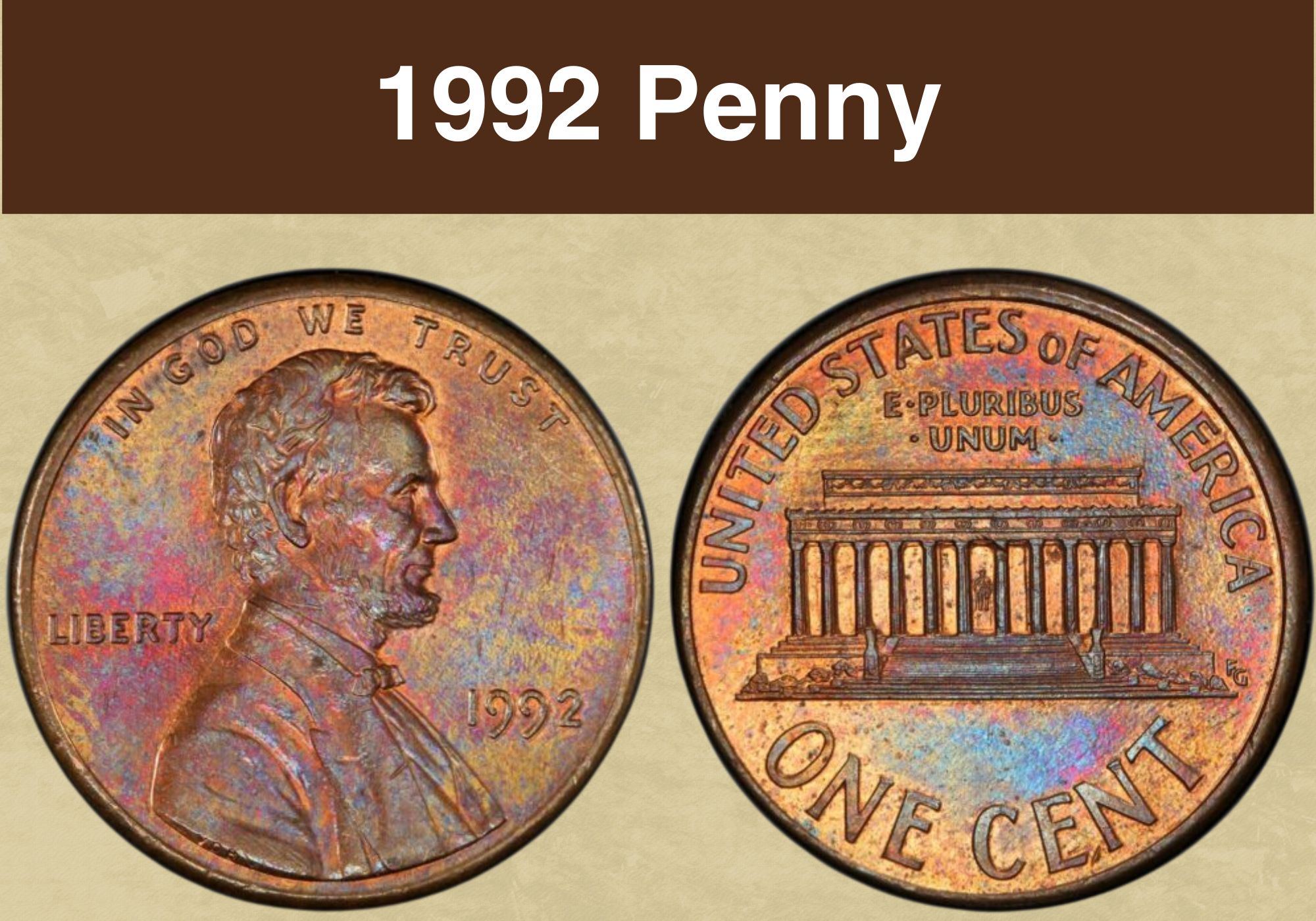
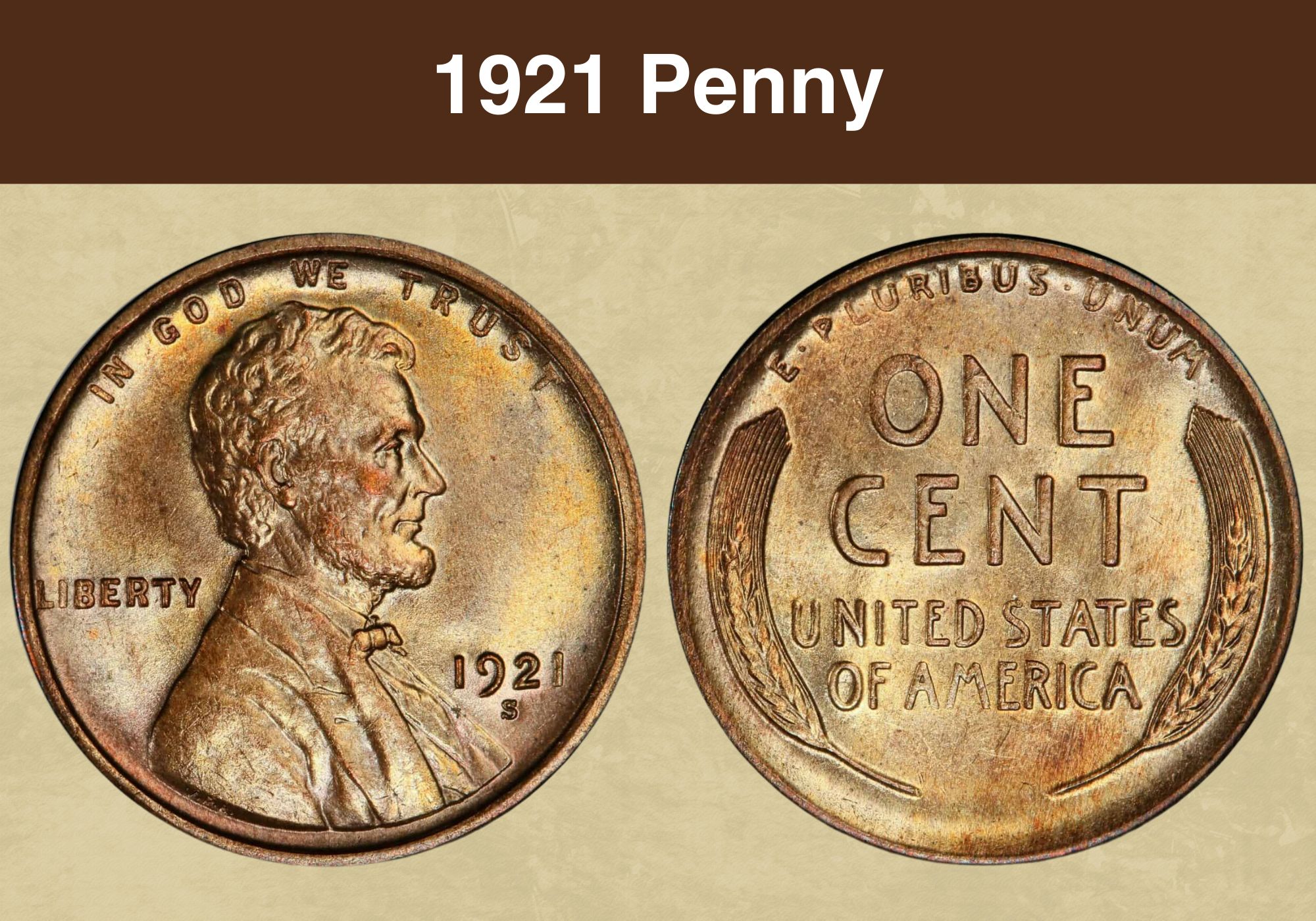
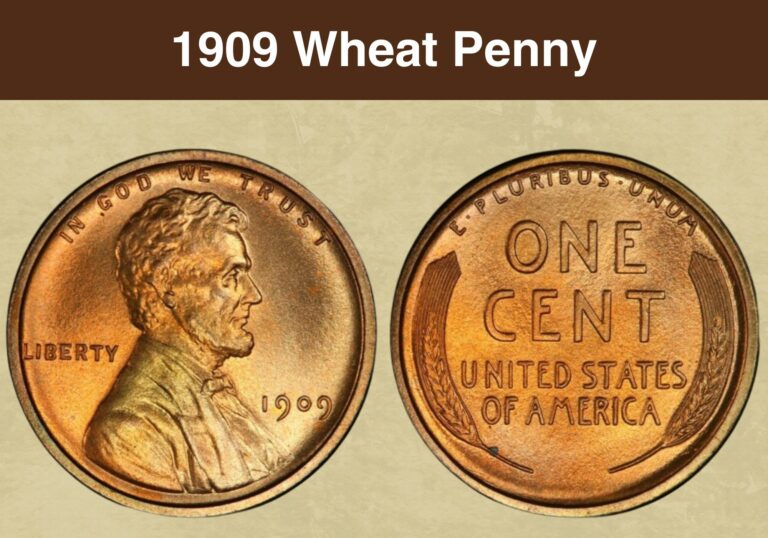
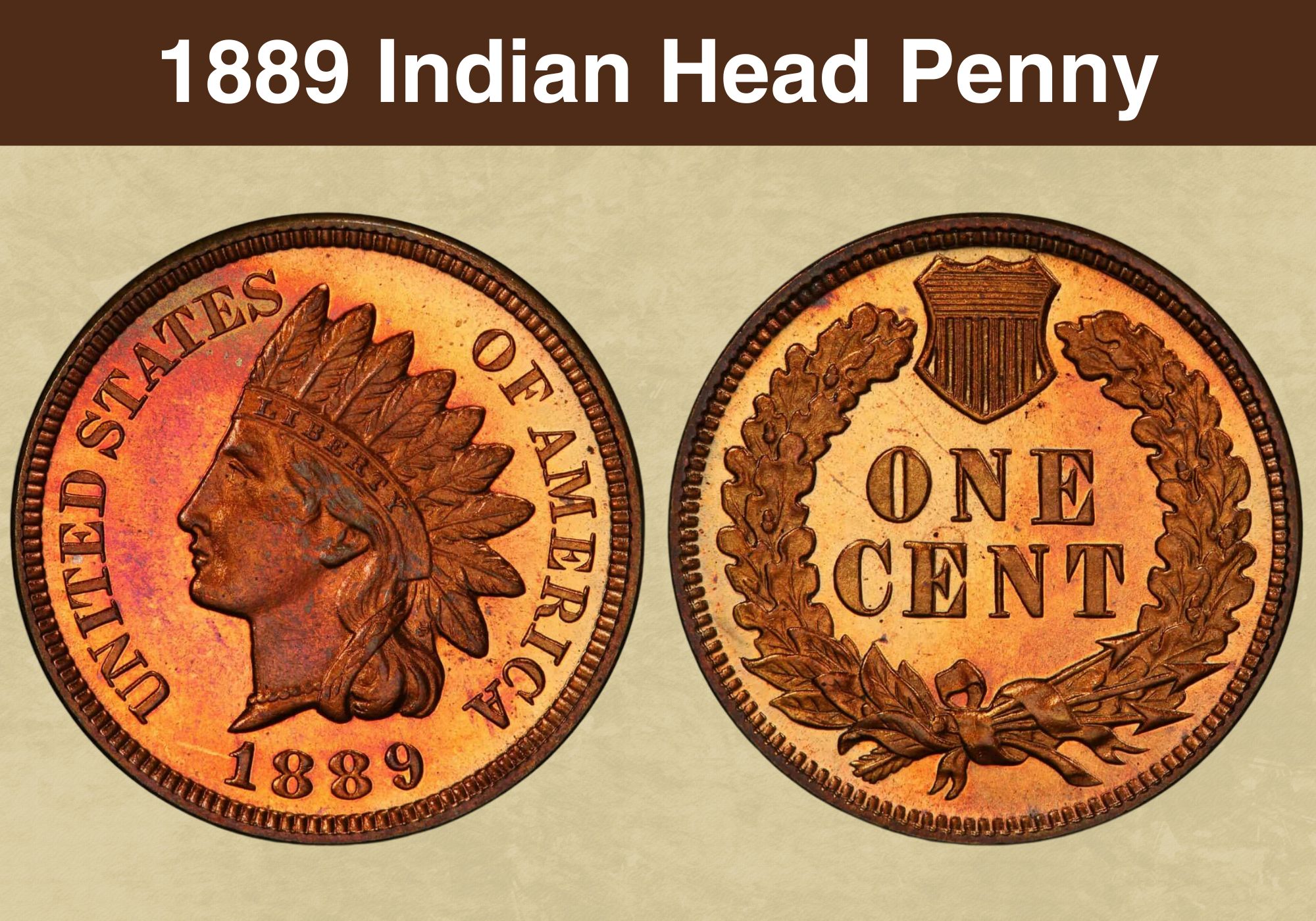
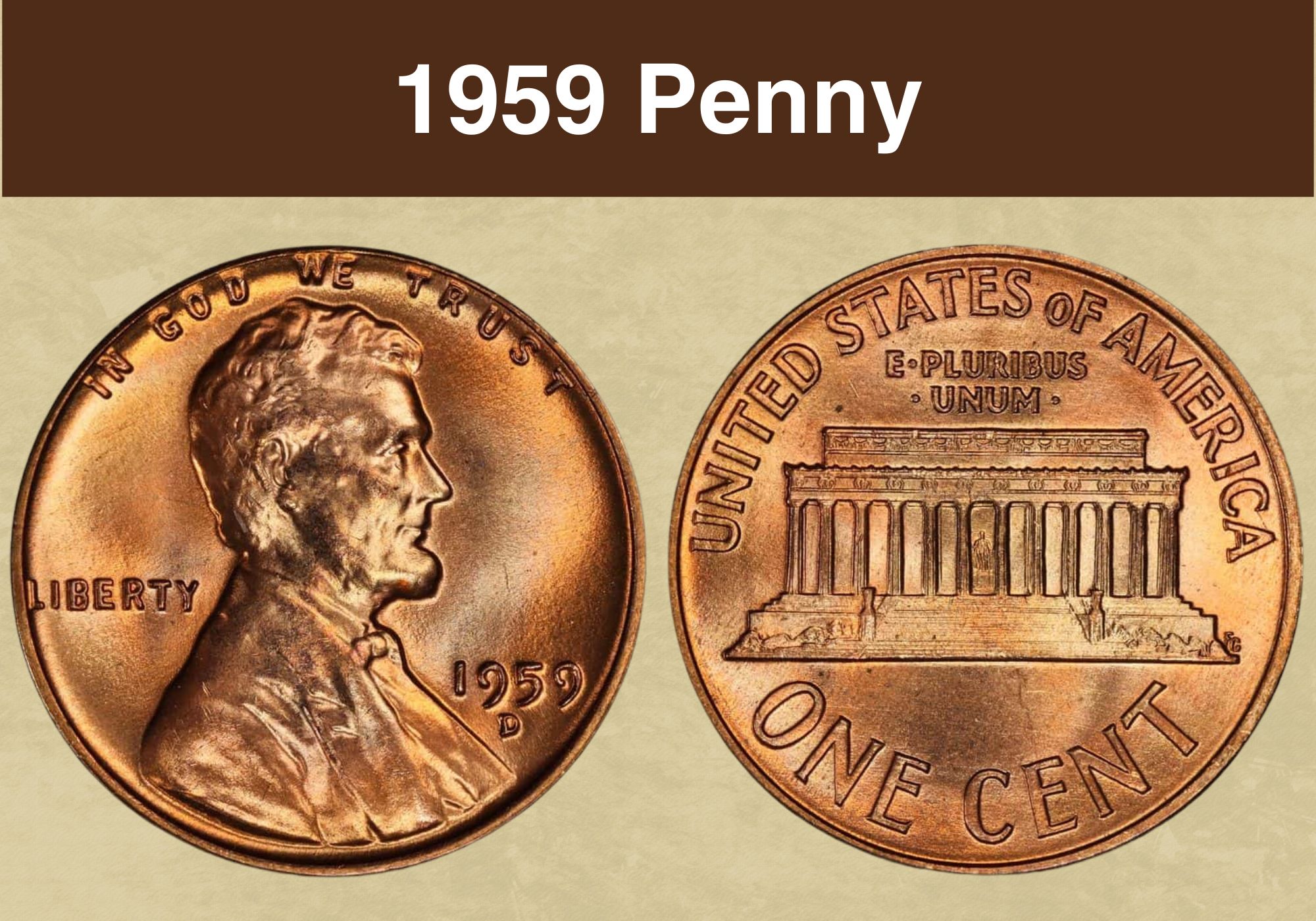
I have a 1927 penny
with no 1 but has a large D in its place